There can be your advertisement
300x150
The Legend's Home: Where Coco Chanel Lived
Material embodiment of her philosophy of life: a blend of simplicity and luxury, functionality and beauty, Western and Eastern traditions
Coco Chanel lived one of the most vibrant lives of the 20th century, yet her homes were no less legendary than she was. The designer lived at the Ritz Hotel from 1937, except for time spent in Switzerland. Suite 302 was renamed in her honor after the founder's death. By day, the great mademoiselle worked from her apartments on 31 Rue Cambon—the address that forever became synonymous with French chic. Two homes, two lives: one for sleep and solitude, another for creativity and meetings. Together they formed a unique universe of a woman who changed not only fashion but also perceptions of how a modern, independent lady should live.
Main points from the article:
- Chanel lived in two places: slept at the Ritz Hotel and worked from her apartment on 31 Rue Cambon;
- Interiors combined French antiques with Eastern motifs and modern ideas;
- Instead of doors, she used Chinese screens—afraid of enclosed spaces;
- No bedroom was ever in the apartment—only work and guest areas;
- Every detail of the interior had symbolic meaning, reflecting her character.
Rue Cambon, 31: the house that became an empire
The great mademoiselle worked, hosted clients and guests at this building for the last seven years of her life. Here she spent most of her time, only retiring to her private suite near the Ritz Hotel for sleep. This 18th-century mansion became the center of her universe: the ground floor held a boutique, the second floor had fitting rooms, and the fourth floor contained workshops. The third floor housed her legendary apartments.
In 1910, she became a licensed milliner and opened her boutique Chanel Modes at building No. 21 on Rue Cambon in Paris. Since this address already housed a successful clothing manufacturer, Chanel sold only hats there. Later she moved to building 31, and this address became the brand’s symbol forever.
The apartment was small but meticulously designed. There was never a bedroom on Rue Cambon—Chanel zealously maintained the property as a studio. The apartment included a living room, dining room, office, and library—all spaces for work, creativity, and entertaining guests.
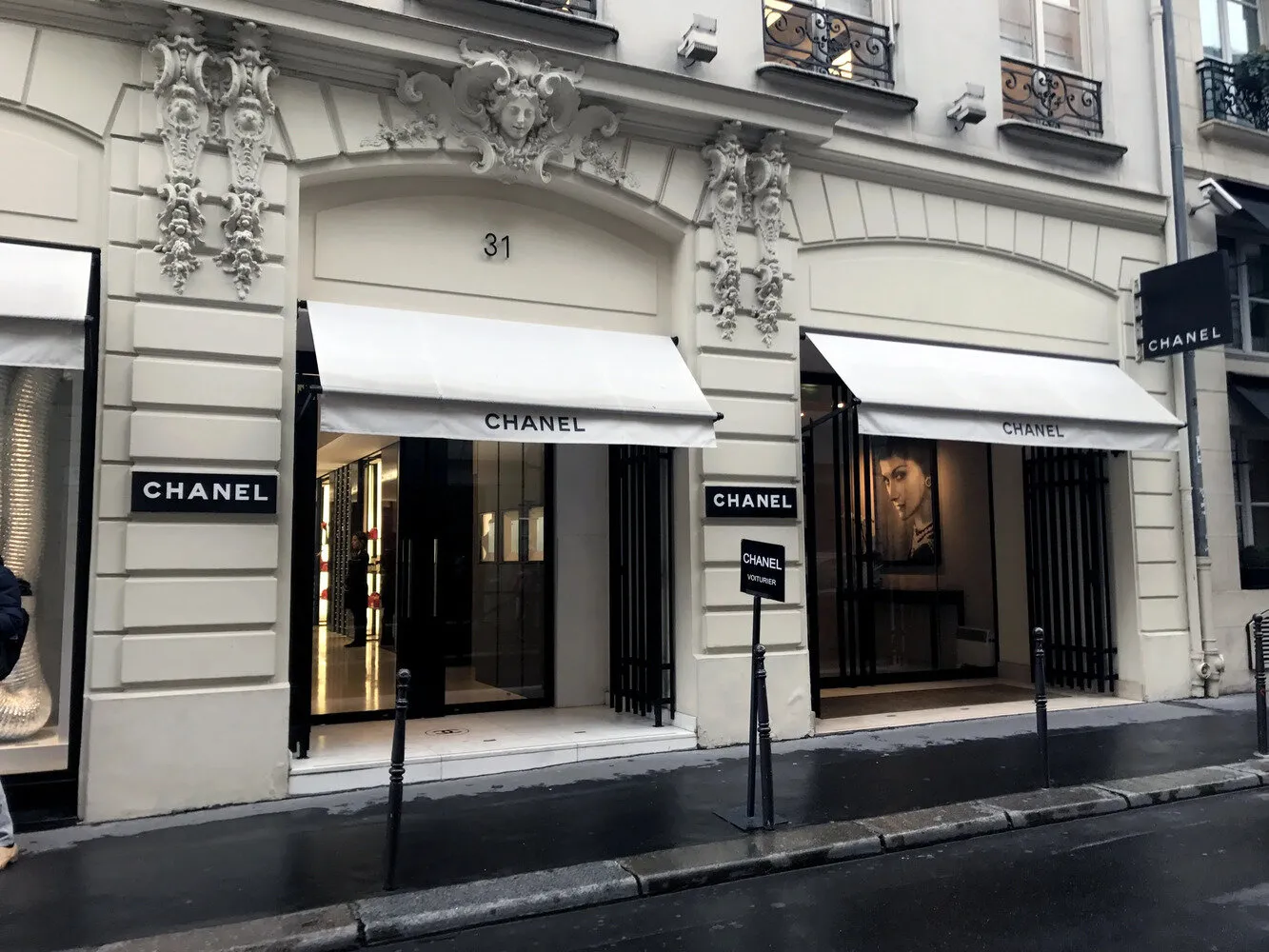
Photo from disc-clover-gyyd.squarespace.com

Photo from skillbox.ru
Eclecticism as a reflection of the soul
Coco mixed an incredible cocktail: antique armchairs, a 18th-century Venetian mirror, a Roman marble copy of the Greek Venus, chandeliers with crystal droplets. Modern designers would call this eclecticism, but for Chanel it was a natural way to surround herself with beauty from different eras and cultures.
Classic French furniture, antiques, Italian and Asian motifs. At the time, this was truly unusual—blending East, West, and South. Surrounded by beautiful furniture and artifacts from ancient Greece, Egypt, China, and Italy, along with her favorite books, the designer secluded herself in the apartment to work, read, dream, rest, dine, and entertain a close circle of friends.
Special place in the interior were Chinese lacquered screens from Coorg—gifts from her lover Arthur Kappel. Chanel fell in love with Chinese art thanks to Arthur Kappel, known by the nickname Boy. These screens became more than decor—they were a philosophy of life for the great mademoiselle.
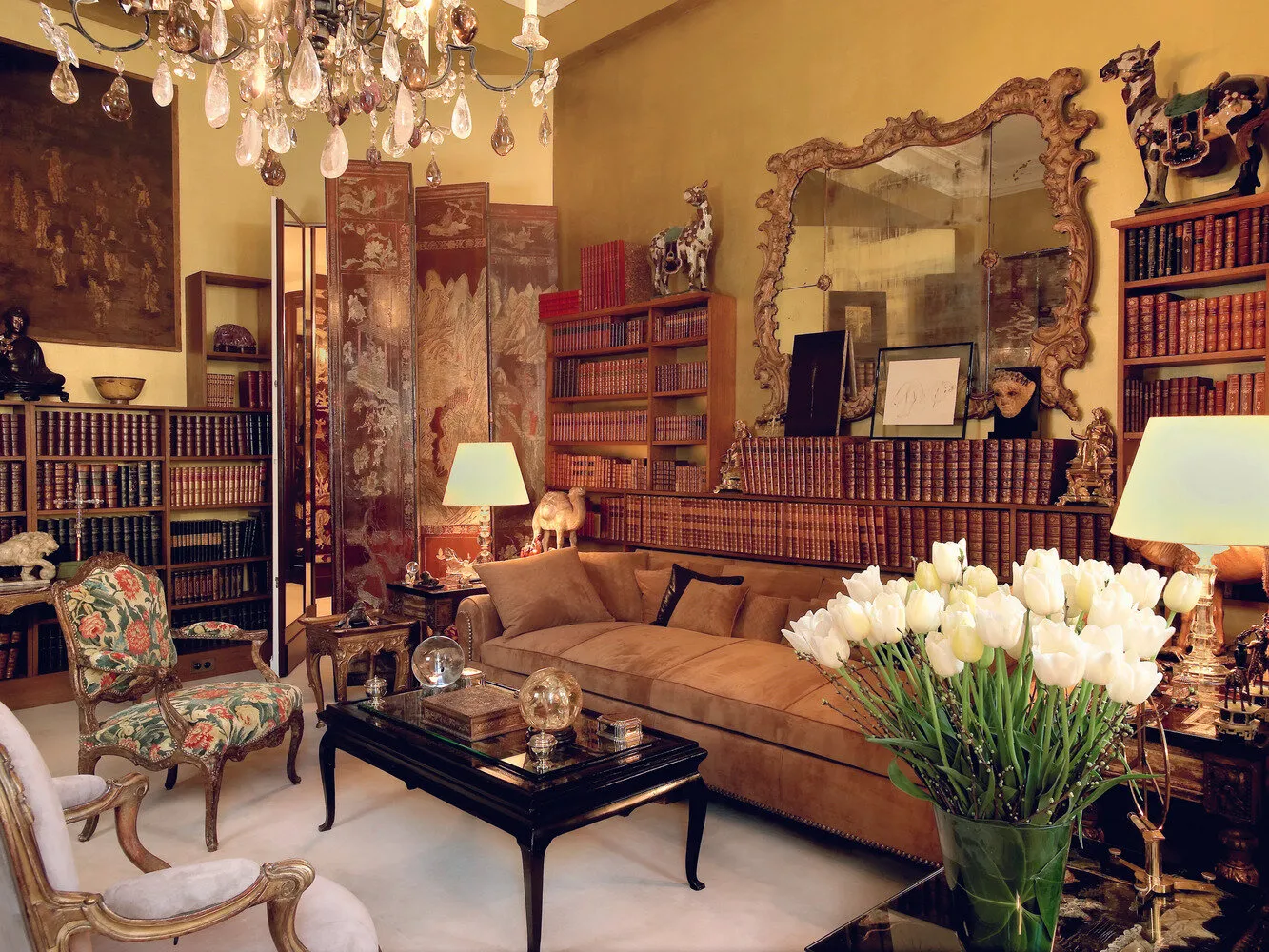
Photo from media.revistaad.es
Fear of doors and love for screens
She had an intense aversion to doors. Instead, Chanel preferred elegant lacquered screens. Since she hated doors, she used Chinese screens to close doorways. She believed that this made guests forget it was time to leave.
But the reason went beyond hospitality. The screens helped her cope with a neurosis and fear, as covering a door psychologically made the space feel unconfined. The woman feared enclosed spaces and loneliness all her life. Screens created an illusion of openness while still zoning the space.
Even her personal apartments on Rue Cambon, 31 were surrounded by numerous screens. They served both functional and atmospheric purposes, creating the Eastern ambiance that Coco loved.
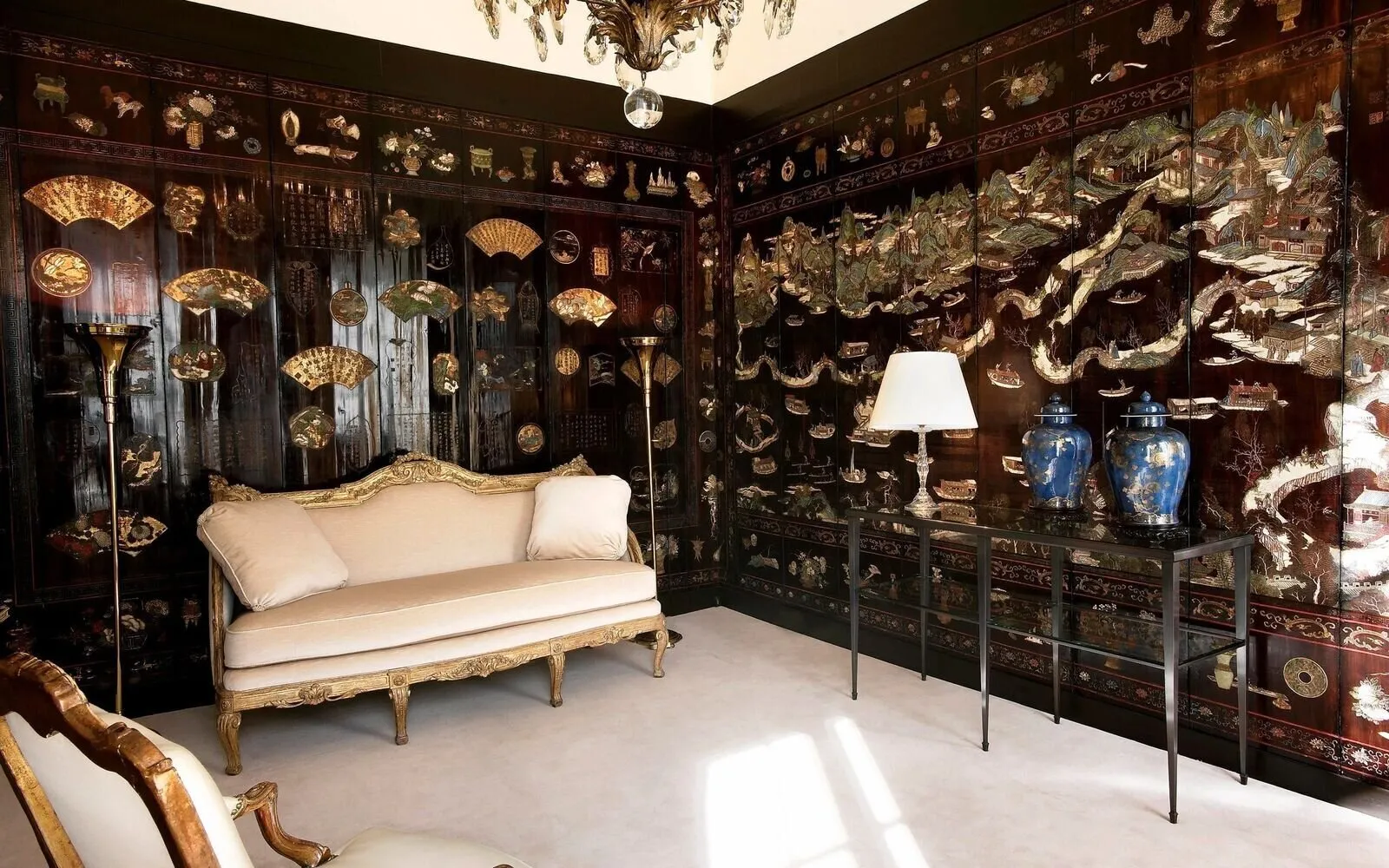
Photo from i.pinimg.com
Mirrors and mysticism of numbers
Unlike her personal space, the staircase was clearly influenced by Art Deco. It still features a cream carpet and mirrored walls. A wide spiral staircase leads to the second floor of house No. 31, with dozens of mirrors surrounding it—creating a dizzying surreal effect.
During fashion shows held downstairs, Gabrielle Chanel would sit on this staircase. Seated on step five (a reference to the famous Chanel No.5 perfume), she was invisible to viewers, able to observe her shows and public reactions calmly.
The number five followed Chanel throughout her life. The octagonal mirror on the wall inspired the cap of the CHANEL No.5 perfume, echoing the curves of Place Vendôme that Gabrielle could see from her window in her Ritz residence. In Eastern beliefs, the number “eight” symbolized infinity and a lucky charm.
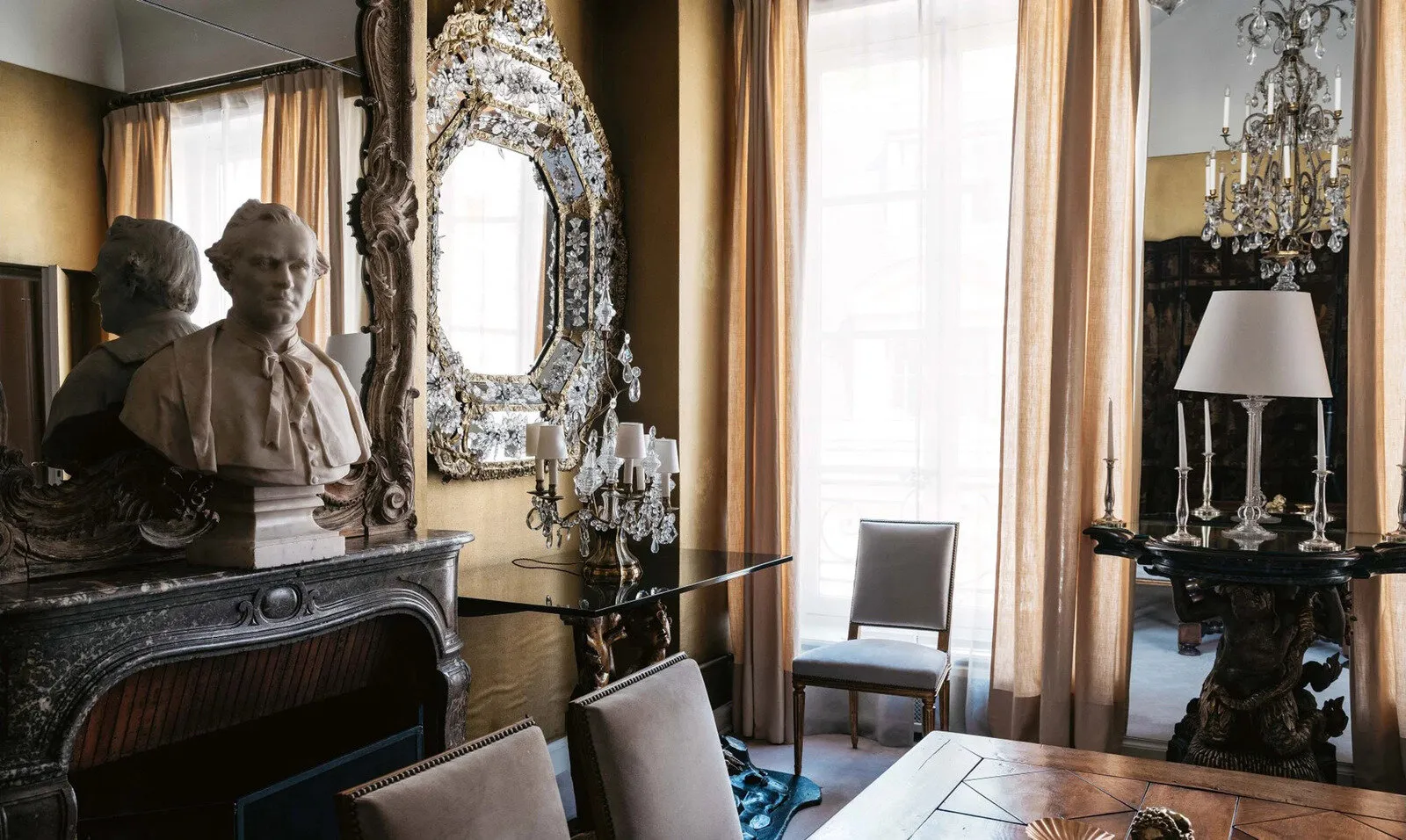
Photo from avatars.mds.yandex.net
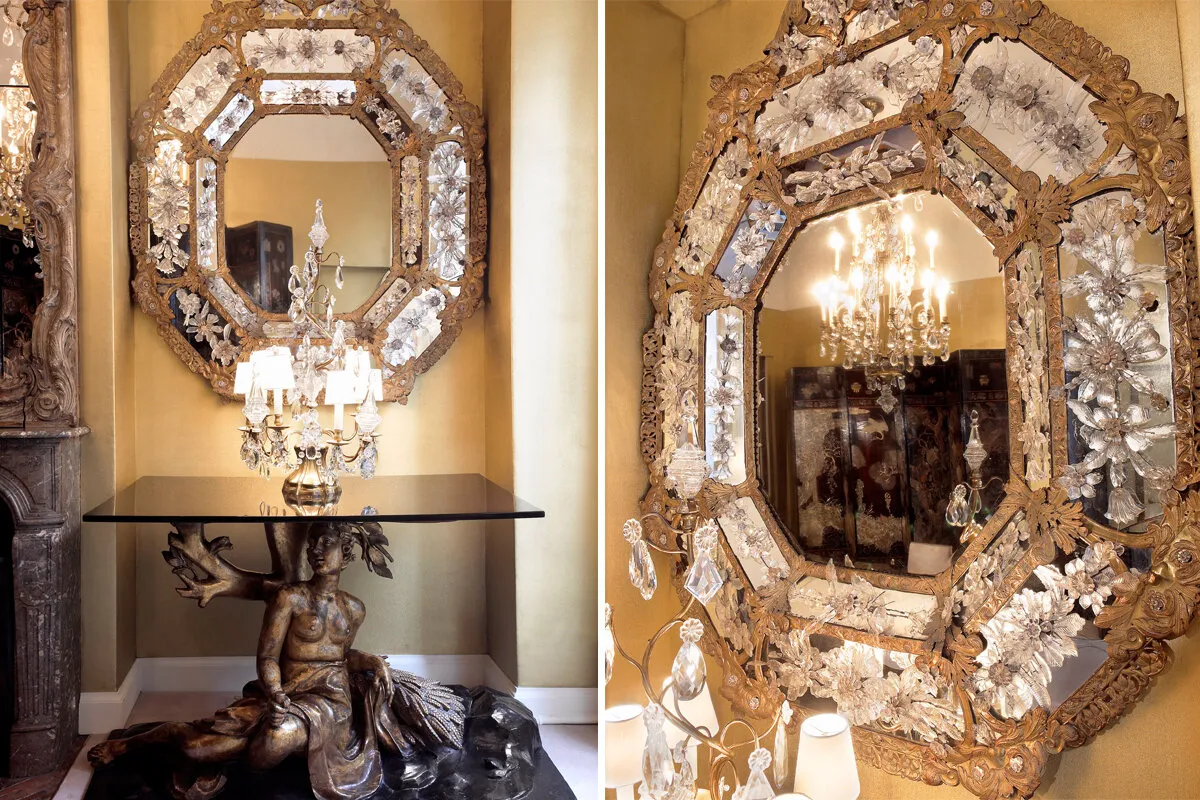
Photo from labellecrush.com
The library and symbols of luck
All of Gabrielle's books were in deep red covers—just like her famous lipstick and the interior lining of bags she created. Red became a signature long before the iconic red-lined handbags appeared. The library held works by French classics, books on art history, and Eastern philosophy.
Chanel believed deeply in symbols. Her apartment featured many lucky figurines—open-mouthed frogs, a pair of Japanese deer, and motifs with wheat symbolizing prosperity. She also believed in the healing power of crystals and adorned each room with chandeliers.
Lions held a special place in her talisman collection. She also placed great importance on her zodiac sign, Leo, visible everywhere. Lion figurines, lion heads on furniture, and images of the king of beasts in decor reflected her character.
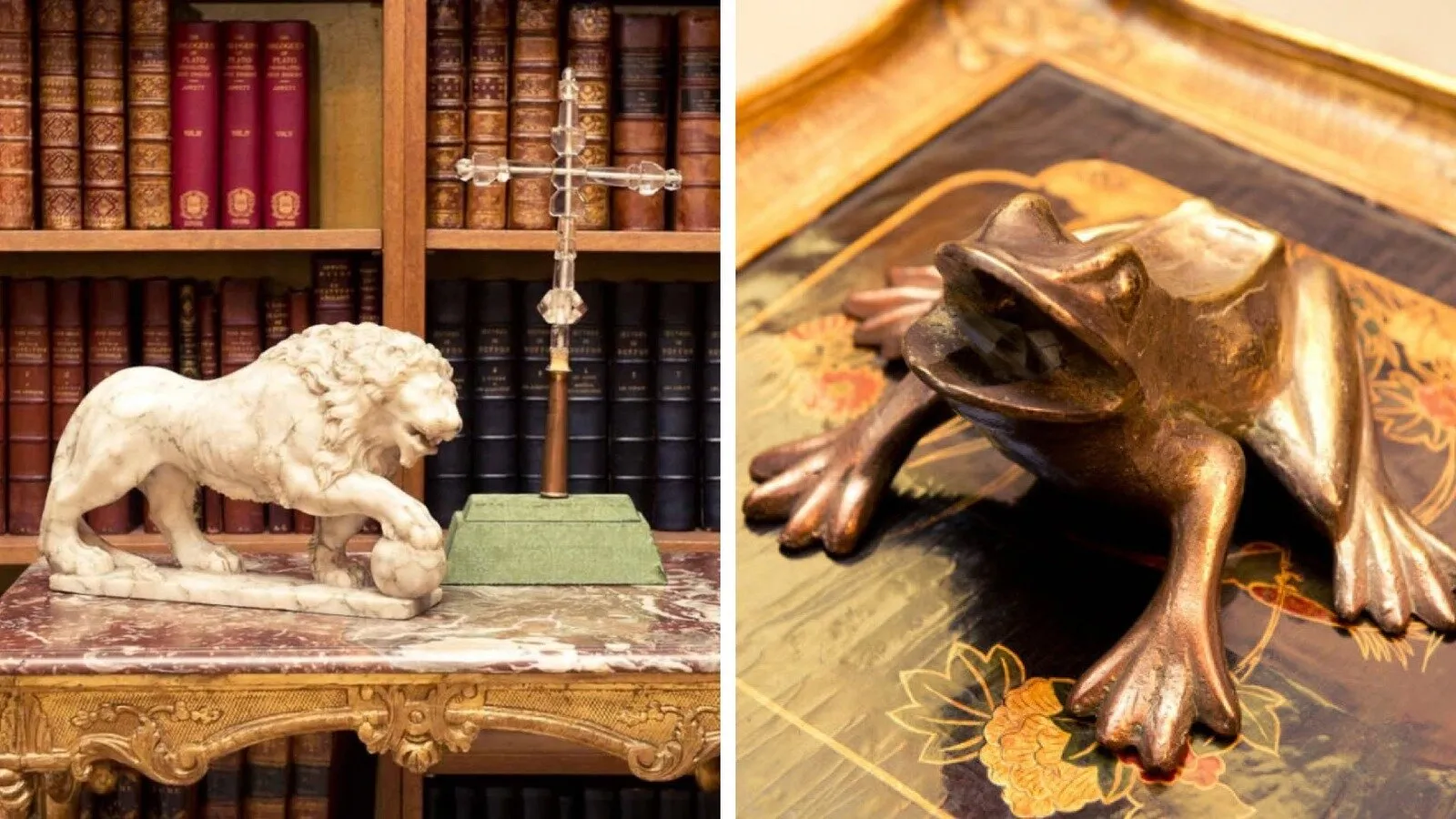
Photo from oskelly.ru
Ritz Hotel: a home for sleep and solitude
It is said that Chanel often said, “Ritz is my home.” She lived there for over 35 years (from 1935 to 1971) and died at age 87 in the Ritz Hotel. Every evening after work, she walked from Rue Cambon to the hotel—just a five-minute stroll through central Paris.
Chanel’s suite was restored using photographs and looks as it did during Chanel's time—she adored lacquered furniture from Coorg, baroque mirrors, and crystal. The suite at the Ritz consists of two bedrooms and a luxurious living room with a stunning view over Place Vendôme.
For 34 years, she walked daily from the hotel to Rue Cambon and back, informing staff in advance so they could mist her favorite No.5 perfume into the suite. This ritual shows how important comfort and atmosphere were to her.
Years of exile in Switzerland
In 1944, under Churchill’s advice, she was released but only on condition that she leave France. Chanel had to move to Switzerland, where she lived until 1953. In exile in Lausanne, she stayed at top hotels and underwent cosmetic and spa treatments at the famous Clinique Valmont.
Even in exile, Coco did not change her habits. She often visited Steffena Tea House in Montreux—a gathering place for celebrities living in Switzerland—and the equally famous Chalet-des-Enfants restaurant on nearby hills. It is said she rarely left her suite at the Beau-Rivage Hotel, instead spending time on its balcony overlooking Lake Geneva and the mountains.
The legacy in design
Interiors on Rue Cambon—wisdom's book—are still a historical reference for the prestigious brand. The apartments are preserved almost exactly as they were when Chanel died in 1971. Today, the apartment is closed to visitors, but its influence on design continues.
Here Karl Lagerfeld photographed young Kaia Gerber for a handbag campaign. Here he draws inspiration and ideas for Haute Couture collections, and Chanel jewelers study motifs for unique timepieces and High Jewelry pieces.
Coco Chanel’s homes were not just places where she lived. They embodied her philosophy of life: a blend of simplicity and luxury, functionality and beauty, Western and Eastern traditions. On January 10, 1971, at age 87, Gabrielle died from a heart attack at the Ritz Hotel in Paris where she lived for so long. She left on familiar ground, leaving behind not only a fashion empire but also an aesthetic of life that continues to inspire designers worldwide.
More articles:
 Stylish Office Chairs: 10 Trendy Finds
Stylish Office Chairs: 10 Trendy Finds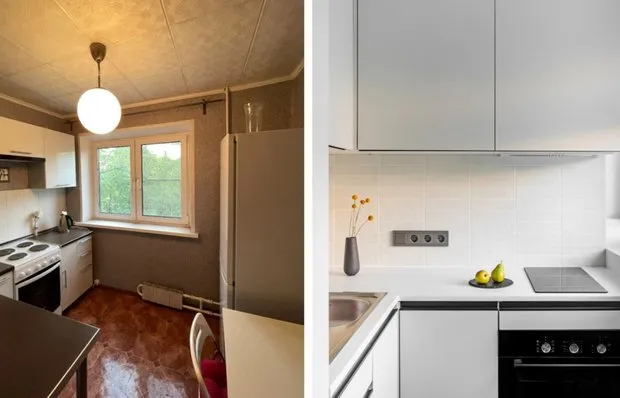 Before and After: Beautifully Transformed 5 m² Kitchen in a Brezhnev-Era Apartment
Before and After: Beautifully Transformed 5 m² Kitchen in a Brezhnev-Era Apartment Minimalism with Character: How They Designed a Micro-Kitchen in a Brezhnev-Era Apartment
Minimalism with Character: How They Designed a Micro-Kitchen in a Brezhnev-Era Apartment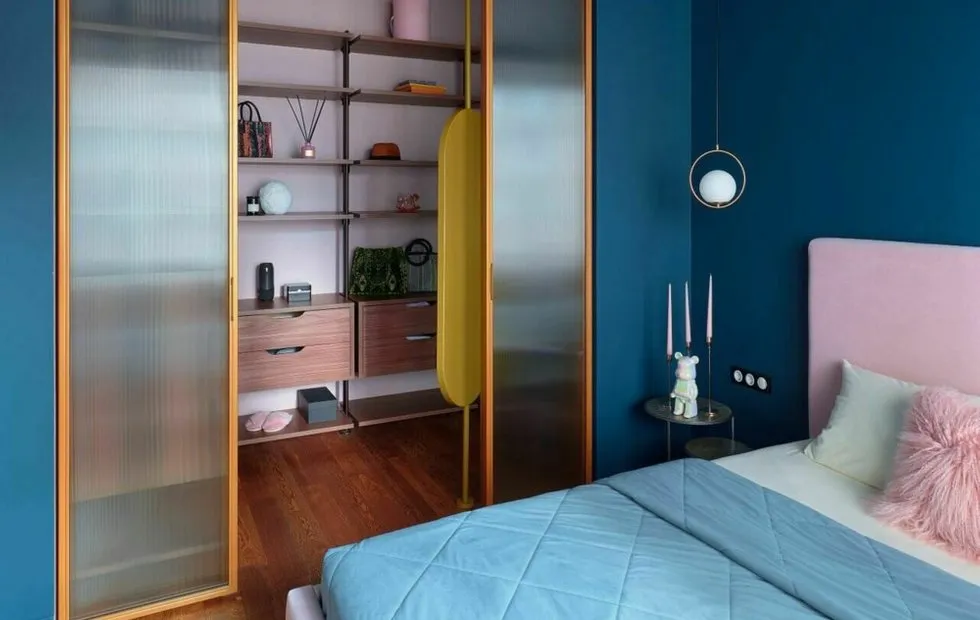 How to Arrange a Closet in a Studio Apartment: 7 Unusual Solutions
How to Arrange a Closet in a Studio Apartment: 7 Unusual Solutions 7 Ideas We Borrowed from the Transformed Brezhnev-Era 45 m² Apartment
7 Ideas We Borrowed from the Transformed Brezhnev-Era 45 m² Apartment Accent on Classic: How They Designed a Stylish Kitchen in a Forest Cottage
Accent on Classic: How They Designed a Stylish Kitchen in a Forest Cottage 6 Design Ideas from a Forest Cottage Near Samara You Can Replicate Too
6 Design Ideas from a Forest Cottage Near Samara You Can Replicate Too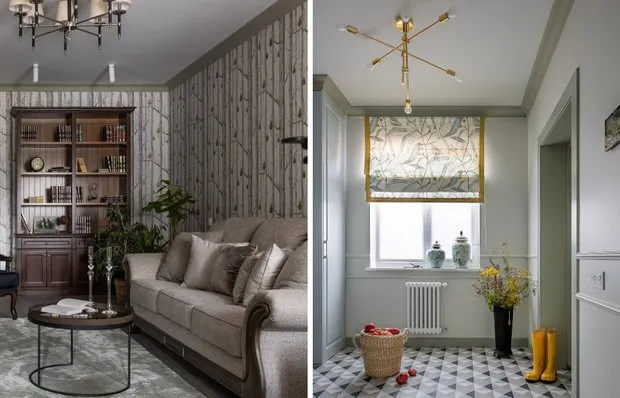 7 Ideas from a House in Bashkortostan That Will Fill Interior with Harmony of Nature
7 Ideas from a House in Bashkortostan That Will Fill Interior with Harmony of Nature